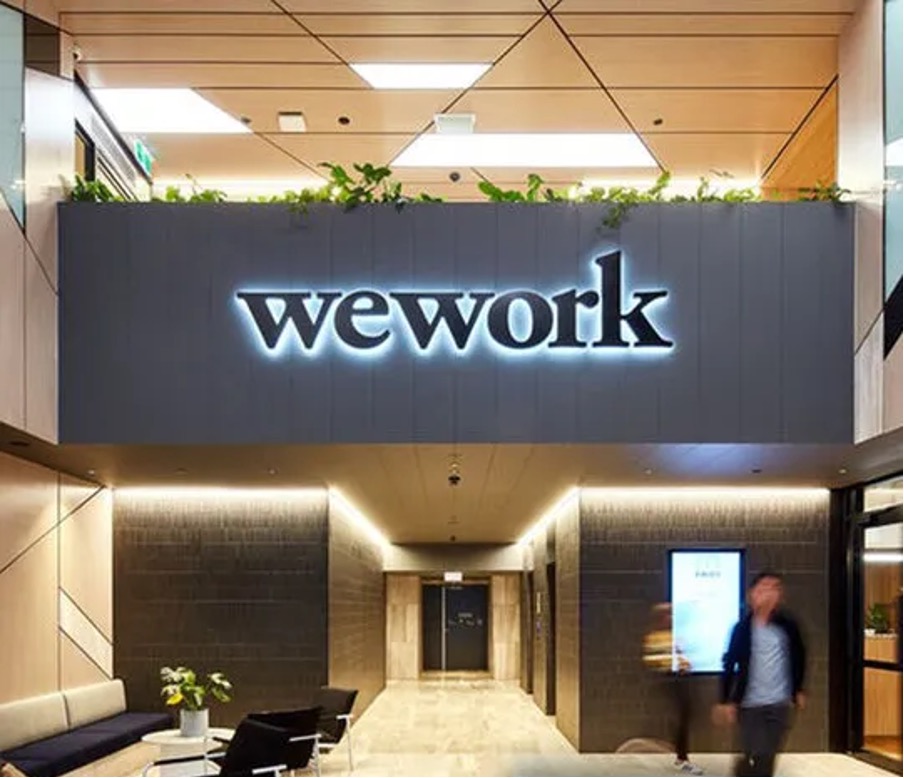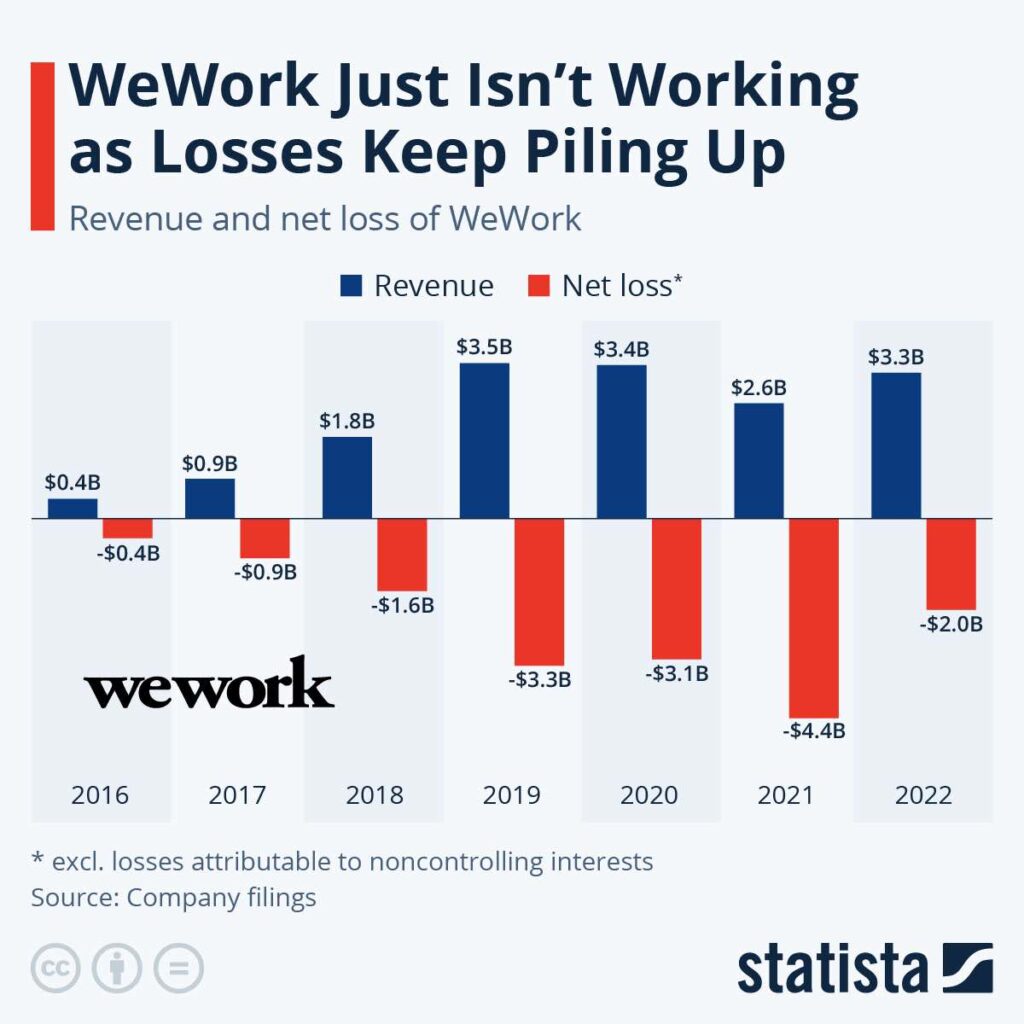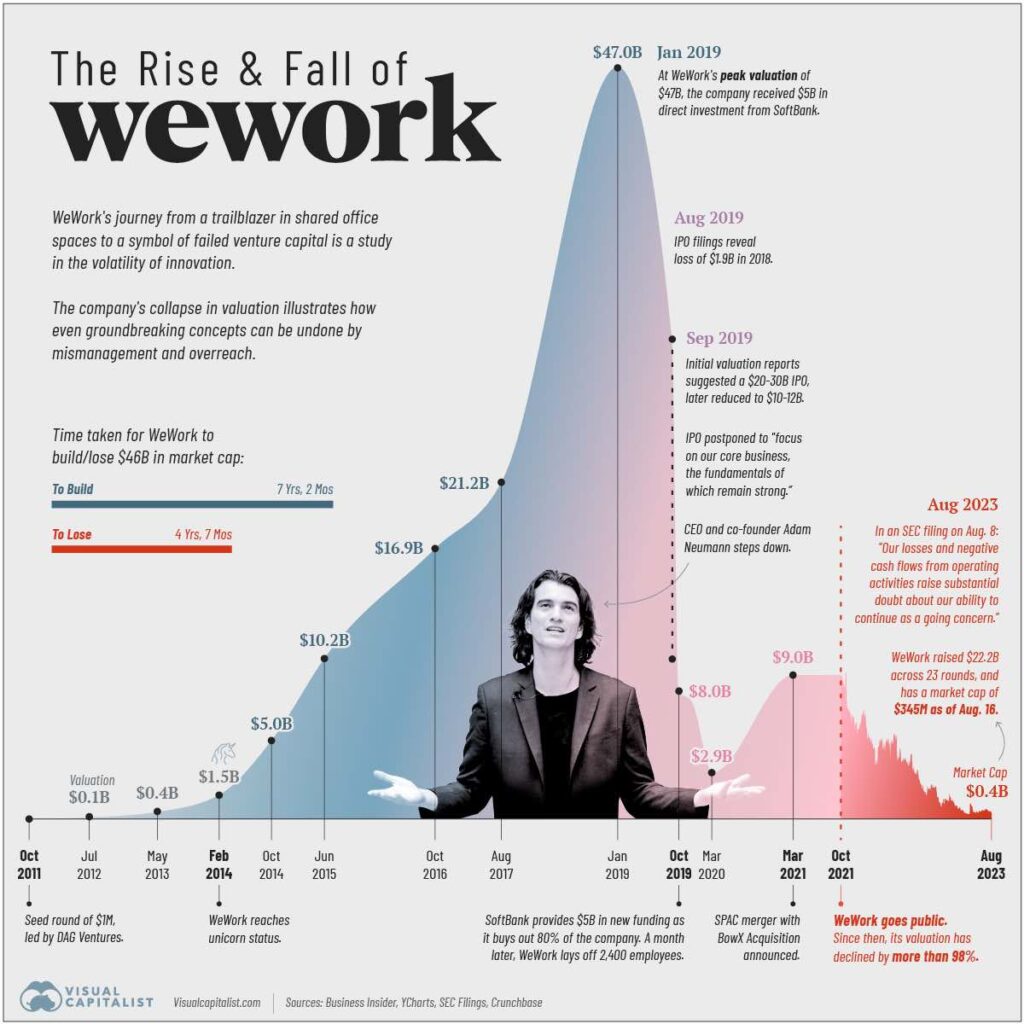The company, in its recent filing with the Securities and Exchange Commission (SEC), stated that their losses and negative cash flows from operating activities raised substantial doubt about their ability to continue as a going concern. Following this, its market capitalization declined to less than $354 million. This indicates that the risk of bankruptcy is looming over the company, though it has not yet filed for bankruptcy.

For those who have not heard of WeWork, it’s a US-based office-space leasing company that offers flexible workspaces to freelancers, startups, and companies seeking a “flexible office solution” worldwide. The business model of WeWork is simple: it enters into long-term lease agreements with developers, renovates and furnishes their properties, and provides flexible lease options to tenants on a short-term basis. It’s an easy model, isn’t it? Leasing and then subleasing. But there is a drawback in this framework, which we will come back to.
According to statistics released by the Administrative Office of the U.S. Courts, annual business bankruptcy filings rose 23.3 percent, from 12,748 to 15,724 in the year ending June 30, 2023, and non-business bankruptcy filings rose 9.5 percent to 403,000, compared with 367,886 in the previous year. U.S. corporate bankruptcies rose in 2023, with the first two months of the year registering the highest total for any comparable period since 2011, according to S&P Global Market Intelligence. Again citing data from the latter source, S&P recorded 54 corporate bankruptcy petitions in April, a drop from 70 in March, which pushed the year-to-date count to 236, more than double the comparable figure a year ago and higher than any of the prior 12 years. A few notable names that filed for bankruptcy are Vice Media, Virgin Orbit, Bed Bath & Beyond, Silicon Valley Bank Financial, and many more.

When there are so many corporations and firms facing and filing for bankruptcy, then why is the article about WeWork? Because its case is quite interesting. The rise of WeWork is similar to a shooting star lighting up the business world. However, much like a meteor, its rapid ascent was followed by a swift and dramatic fall, leaving behind a cautionary tale of the consequences of unsustainable growth and decisions. Some within the film industry viewed WeWork’s tumultuous journey as a narrative ripe for cinematic adaptation. This sentiment was reinforced when Hulu released a documentary titled ‘WeWork: Or the Making and Breaking of a $47 Billion Unicorn.’ Notably, it doesn’t end there; a miniseries titled ‘We Crashed’ also found its way onto Apple TV, solidifying the story’s allure for the screen.
The company was established in the year 2010 by Adam Neuman and Miguel McKelvey, as an opportunity to meet the diverse needs of startups and freelancers who needed professional office spaces at affordable prices but could not afford to enter into long-term leases, especially after the 2008 financial crisis.
They provided a solution to the problem—that’s what entrepreneurs do. As described earlier regarding WeWork’s business, there was nothing new in the idea of office subletting. Before them, a Swiss company IWG (International Workplace Groups), started in 1989, whose workspace and service brands are Regus, Signature, and Spaces followed the same model.
They witnessed steady growth over the years, but after the dot-com bubble burst in 2000, their model broke down as they had signed long-term lease agreements that they could not break. But the tenants, who were mostly tech companies, canceled contracts, leading to a cash flow mismatch. This is the flaw in this model. Did they go bankrupt? No, they didn’t, and today, the company is the world’s largest workspace provider.

WeWork copied the same idea but offered a new take on it. They promoted the company as a physical social network, similar to tech platforms like Instagram and Facebook, but here, they could all catch up physically. Their spaces provide an aesthetically pleasing environment infusing motivation and energy into every working moment. Describing WeWork’s journey, it had an initial valuation of $97 million in July 2012. By 2014, its valuation crossed the $1 billion mark, earning unicorn status. In August 2017, the Japanese conglomerate SoftBank made an initial investment of $4.4 billion from its Vision Fund, catapulting WeWork’s valuation to $20 billion. Its major investors are SoftBank, BlackRock, King Street Capital Management, Brigade Capital Management, and many other notable names. Further investments from SoftBank brought its total investment to over $10 billion, driving WeWork’s valuation to a peak of $47 billion. After this, its journey to the valley started.
As WeWork’s valuation soared, so did its accumulated losses, year after year. None of the investors raised a red flag. It seems private investors were willing to tolerate the financial losses so long as the company’s growth trajectory remained positive. But when the company decided to go public, its financials and leadership came under scrutiny from private investors and potential shareholders. They were concerned about its hefty losses, corporate governance lapses, and the management style of then founder-CEO Adam Neumann, which was unconventional and impulsive. As a consequence, the company had to delay and eventually withdraw its IPO, one of the most highly anticipated public offerings of 2019. In that same year, Adam Neuman stepped down as CEO of WeWork as part of an agreement with SoftBank, securing a substantial $1.7 billion in exchange. Later, in October 2019, SoftBank finalized a pivotal agreement to assume control of the company, entailing a substantial infusion of $5 billion in fresh financing along with an additional potential of $3 billion through a tender offer for current shareholders. Furthermore, SoftBank committed to expediting an already pledged $1.5 billion in financing, thus acquiring 80% ownership.

Then came the pandemic, exacerbating its already persistent issues. Even when the COVID-19 crisis began to recede, WeWork continued to face significant challenges. You would have guessed why. Finally, it went public in March 2021 after completing a merger with BowX Acquisition Corp (SPAC), which raised its valuation to $9 billion from $2.9 billion in March 2020. For knowledge, a special purpose acquisition company (SPAC) is a company without commercial operations and is formed strictly to raise capital through an initial public offering (IPO) for the purpose of acquiring or merging with an existing company.
WeWork’s stock debuted at $11.78 per share on its first day of trading on the New York Stock Exchange. However, its value has since plummeted below 10 cents per share, attaining meme stock status, as its shares surged nearly 100% after hints of potential bankruptcy emerged. WeWork received a non-compliance notice from the NYSE in April 2023, as its stock closed below $1 on average over a consecutive 30-trading-day period. Later in May of this year, Sandeep Mathrani, who took over as CEO following Adam Neumann’s departure, also stepped down from his position.
Written by – Anadi Jain
Edited by – Lucksh Mota




